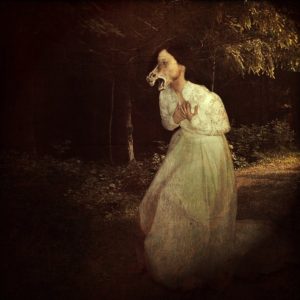Main legends of specters in our beloved country are a set of stories and traditions that are deep-rooted within the popular narrative folklore. They refer to any extraordinary unreal event, yet with traces of reality. In these, themes of the country’s history, mythological beings, the magic of indigenous or African cultures, wandering souls, supernatural beings, origins of distinctive places, among others, are found. For most locals, those stories are considered to have really happened.
Nowadays, all these legends have been grouped as “Legends of Our Land”. They narrate specific events of a particular place which, in most cases, is considered enchanted. Also, there are religious legends that refer to manifestations of a divine presence. Often, they have the purpose of strengthening the Catholic faith in our inhabitants. And finally, there are the legends of magic, which are mainly focused on the appearance of ghosts.
The 2 spookiest magical legends Costa Ricans call these legends’ characters “espantos” (ghosts), alluding to the fright they might produce in people who are not aware of them. Many of these specters, according to the legend, originated because they challenged God’s Laws and, as a consequence, were condemned to eternal punishment.

“El Cadejos”. It is described as a fabulous animal and often seen in the spectral form of a large dog with very long thick black fur, red eyes lit, jaguar teeth, and goat legs. It appears untimely on the roads by dragging noisy chains to those who wander at night misbehaving, mostly those who walk on the streets in a drunken state. According to some, it does so to warn them to change their way of living. However, locals say it is not aggressive or bloodthirsty, and that never attacks anyone. In other versions, it is told that when children cannot get to sleep, it can be invoked and soon you will hear its nails on the tiles or walls of the house, with its breath snorting through a crack in the window, without leaving until there is total silence, and that child finally falls into a deep sleep.
Moreover, the most common version of this legend relates that it was a son who lived in a great debauchery and suffered his own father’s curse. Yet, a different version refers to a corrupt priest who was punished by God. But others assure that it was the young son of an alcoholic man who was receiving, along with his mother, the mistreatment of his father and trying to correct the bad steps of this he decided to disguise himself as a black and hairy animal. One night, when the father was totally drunk, his son tried to scare him. After doing this, the father cursed him condemning him to wander in the form of spectral dog that persecutes though does not hurt anyone.

“La Segua”. It refers to a ghost which appears to men who walk alone on deserted paths, in the form of a very beautiful woman. Men must go in a means of transport, usually riding on a horse, although some stories refer that such transports can also be cars or motorcycles. After the victim agrees to take the woman, her face becomes a horse skull with decomposing flesh, flashing eyes, huge broken teeth, and rotting breath. What happens to the person? Well, that moment varies according to the versions; it is said that she kills them with a kiss or, simply, that they are frightened to death. Another version assures that they either escape or get paralyzed, allowing her to bite their cheek and mark them as adulterers or lustful men.
Religious legends
In our nation, most people are Catholic and that is reflected in local legends by explaining the origin of the patron saints of localities or even those from the entire country. Among them, we can mention:
“The Virgin of Los Angeles”. The legend about the discovery of this virgin may be tracked down around 1635, during the colonial era. Its recognition as a Patroness of our country comes from 1824. It tells about a young “mulata” (someone of mixed white and black ancestors), named Juana Pereira. One single day, while picking pieces of wood next to a stream in the city of Cartago, she visualized a small virginal figure perched on a rock, which she picked up and took to her house. When she looked for it the next day, she could not found it; the rock had inexplicably disappeared and reappeared where she had first seen it. That piece is currently at the Basilica of Los Angeles.
“The Virgin of Ujarrás”. The legend says that an Indian was fishing in the Madre de Dios River. Suddenly, he noticed a wooden box that floated and that contained an image of the Virgin Mary. The aborigine, when seeing this, took the image out of the box and carried it to the friars of the city of Cartago. On the way, he went through the mission of “Ujarrás”, where he placed the image on the floor to rest. After that, when he tried to lift it up, he could not do it nor did 8 more Indians who tried to help him.

